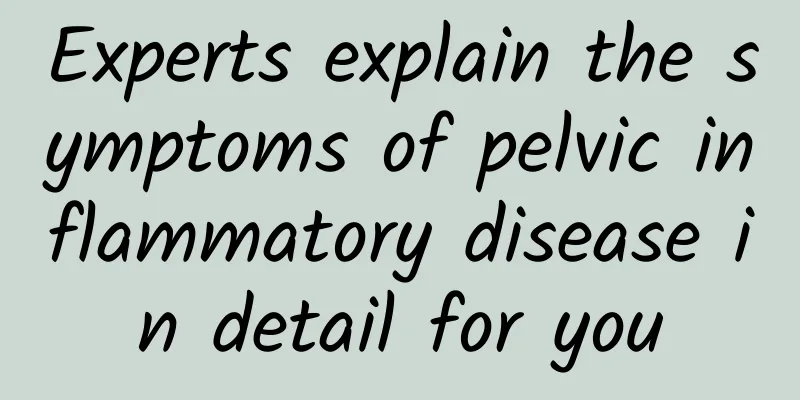What to do with pelvic adhesions? Treatment through hysteroscopy

|
Pelvic adhesions can be treated with hysteroscopy, which is much safer and more effective than dilator therapy. After pelvic adhesion surgery, you should pay attention to your diet and lifestyle. Pelvic adhesions are very harmful to the body, so the sooner you treat it, the better. Pelvic adhesion is a very serious problem and is a gynecological disease. Although science is relatively advanced now, there is still no drug that can cure pelvic adhesions. It can only relieve the symptoms, unless surgery is performed. In fact, surgery is quite mature and will not cause much harm to the body. So what should we do about pelvic adhesions? |
<<: How to treat pelvic inflammatory disease pain? Pay attention to a light diet
Recommend
Expert introduction: Dysmenorrhea can be classified according to the degree of dysmenorrhea
Generally speaking, if we classify dysmenorrhea, ...
A 50-year-old woman is feeling uncomfortable during menopause. The doctor teaches you three ways to help you get through it safely.
Aunt Li, a lively lady who is about to celebrate ...
Does uterine fluid have a big impact on pregnancy?
Nowadays, most married women are prone to gynecol...
Can uterine fibroids cause uterine bleeding? What are the most common symptoms of uterine fibroids?
Uterine fibroids are a very harmful disease among...
What women are not suitable for medical abortion?
Medical abortion is also known as drug abortion. ...
What medicine to take for cervical erosion? The correct process of medication treatment for cervical erosion
Female friends should pay attention to the treatm...
Three conventional examination methods for cervical erosion
Cervical erosion is a common pathological change ...
Correctly understand the difference between vulvar white lesions and vulvar leukoplakia
Do you know the difference between vulvar white l...
Infants aged 4 to 6 months can eat complementary foods to avoid iron and calcium deficiency
The issue of breastfeeding and complementary food...
If you want to prevent adnexitis, you must pay attention to its causes
Adnexitis is a common gynecological disease among...
The complications that cause ovarian cysts include the following:
Ovarian cysts are very harmful to women, and in s...
When is the best time for uterine fibroids to calcify? When does the uterine fibroid calcification require surgery?
Uterine fibroids, as the name suggests, refer to ...
How long after a miscarriage can I take a shower? See what the doctor says
If a miscarriage is not handled in time, it will ...
Prevent sunburn and increase your strength! 6 Reasons to Eat Tomatoes in Summer
In recent years, "tomato" has begun to ...
Can one patch really help you lose belly fat? Combine with sit-ups
Sports tape has a magical effect. It has a modify...









